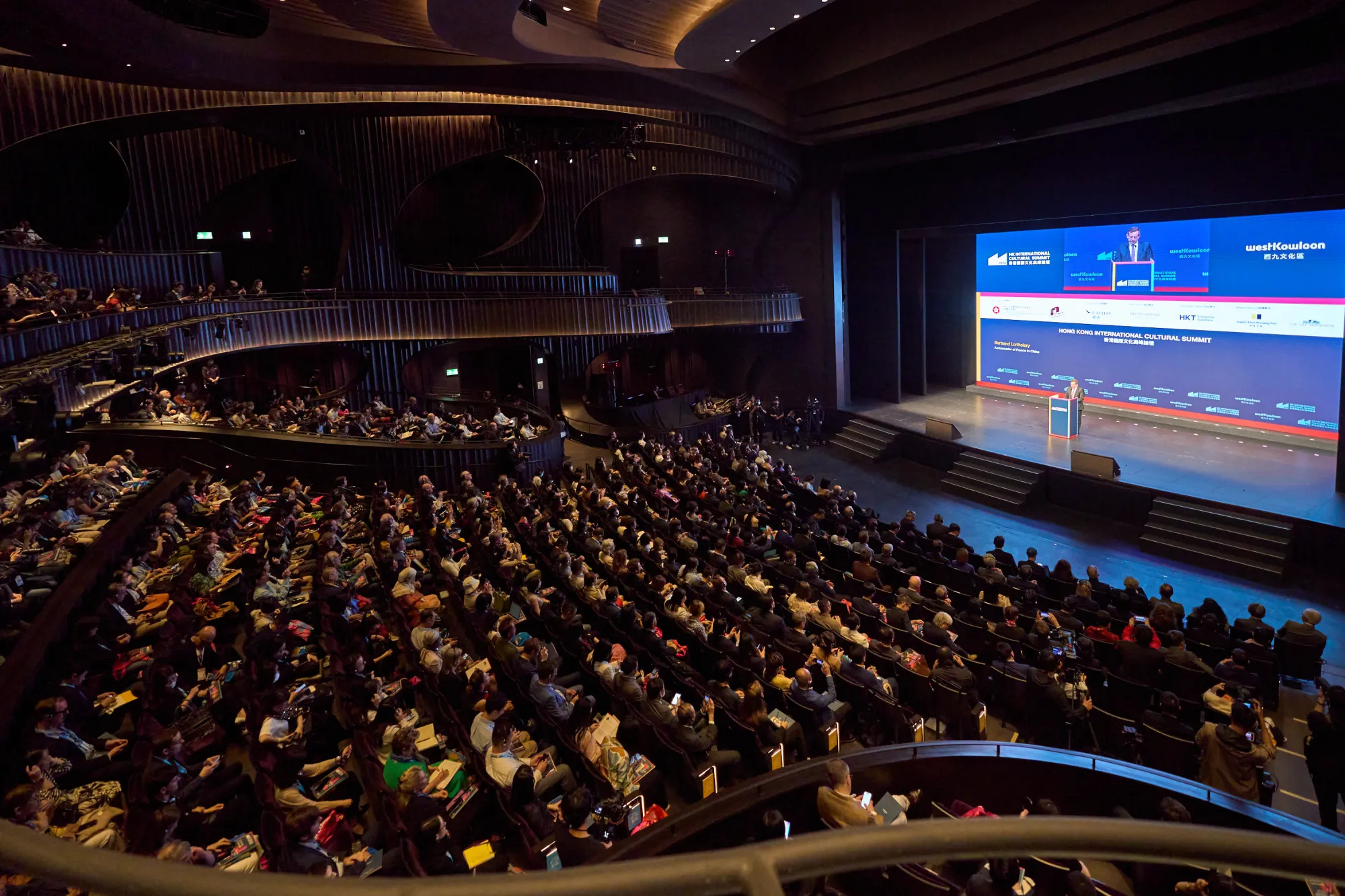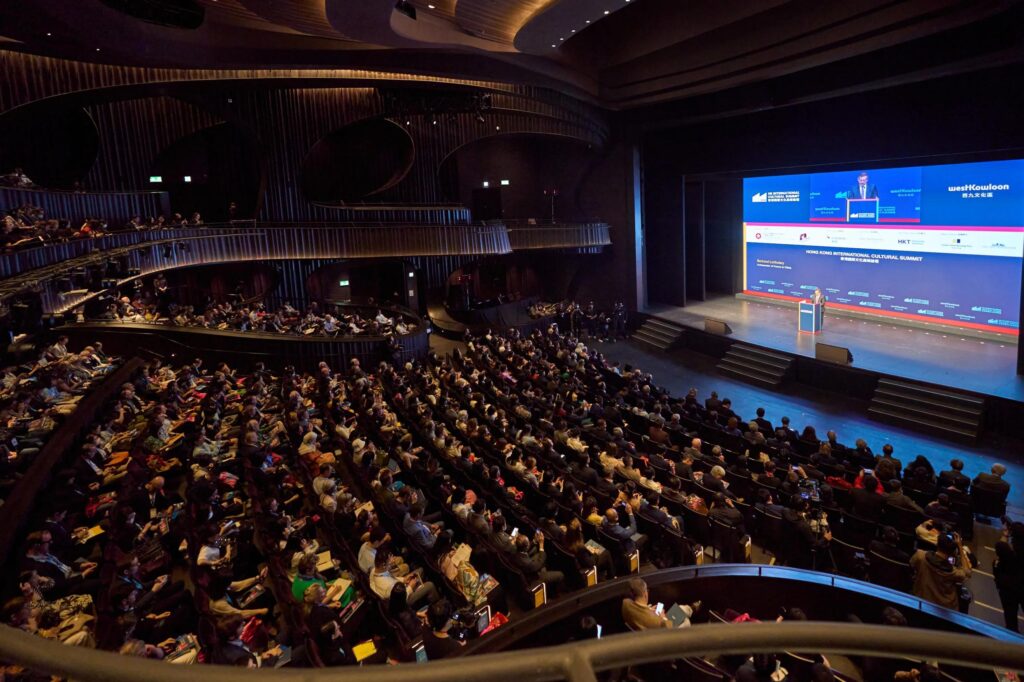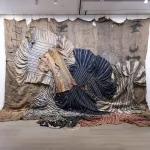
Last year, Henry Tang Ying-yen, chairman of the West Kowloon Cultural District Authority, introduced the idea to host a major conference in Hong Kong, a city that recently has accomplished a significant feat: it attracts not only tourists to its museums each year, but also top cultural leaders from other countries.
That was particularly evident on Sunday, when leaders from nations ranging from Qatar to the United States descended on the West Kowloon district for the event Tang conceived, the first-ever International Cultural Summit. The three day-long event, which continued through Wednesday, brought together artists, museum directors, and scholars, who opined on a spread of pressing issues within the art world.
Museum heads spoke candidly about an array of topics: competing to bring in audiences from around the world, the issues they face in raising enough money to sustain their large-scale institutions, and the pressure to adapt to a digital landscape whose pace is only accelerating.
Museum Heads Talk Politics
On Monday, Tang led a series of opening speeches held at the Xiyu Centre in West Kowloon’s art district, addressing an audience of more than 200 to explain the summit’s goals.
In his forward-looking remarks, Tang sought to demonstrate the city’s role as a financial hub. To grow, he said, Hong Kong will keep investing its resources into art initiatives that lure in foreigners. He continued to play up the economy of Hong Kong, and on the second day even ended up putting it bluntly: “Please spend money in Hong Kong.”
One way this will occur is through partnerships with institutions abroad. On Monday, the West Kowloon Cultural District Authority, the body that oversees multiple museums in Hong Kong, including M+, announced that it had signed 20 memoranda of understanding with 21 arts organizations. It’s the type of agreement often used by foreign government officials and cultural groups as way to formalize research and art loans between countries. Among the signatories were the Centre Pompidou and the Picasso Museum in Paris, the Leeum Museum of Art in Seoul, the Qatar Museums in Doha, the Tate in the UK, and the Asian Film Archive in Singapore. In a statement, Tang described the collective signing as another step in enlarging Hong Kong’s role as “the East-meets-West center international cultural exchange.”
Tang’s remarks were followed by a panel discussion titled “Cultural District’s Contribution’s to Social and Economic Transformation of Cities,” which centered mainly on the politics involved in keeping major museum enterprises feasible when their surrounding demographics are changing. Tim Reeves, CEO of London’s Victoria and Albert Museum, and Katrina Sedgwick, director and CEO of the Melbourne Arts Precinct Corporation, talked openly about how difficult it is to embed a museum in a city as it changes. Potentially isolating people outside those hubs, Sedgwick said, is a concern: “For institutions, that’s a constant challenge.”
The Changing Role of Technology
On Monday, data and new media were the main topics, with talks devoted to these subjects staged at M+, a contemporary art museum that sits near the edge promenade overlooking the waterfront of Victoria Harbour. Good weather brought a sense of ease to these talks, which were more relaxed than some of the earlier ones.
More than 100 people convened for the second round of discussions, titled “Promise of Digital.” Its moderator, New York–based cultural consultant András Szántó, led a conversation with artist Refik Anadol, Fine Arts Museums of San Francisco director Thomas P. Campbell, and Marcella Lista, head curator of new media at the Centre Pompidou. At one point, Szántó asked Lista how she’s coping with changing norms. “There’s no such thing as starting with the digital, but rather examining the history of media,” she responded. “It’s difficult because of obsolescence. I would advocate for speaking about it as challenging to preserve, to thinking about it as unstable media.”
Szántó questioned his peers on whether museums should intentionally lag in their efforts to address advances in the digital space. Should museums wait for gallerists and private collectors to contend with this work? “Look at the NFT market,” Szántó said. “I think a lot of museums felt the pressure to jump in. Maybe they feel good that they didn’t jump to hard.”
Lista concurred that a slower approach is still the best one for institutions contending with new media. She brought up the example of Chris Marker’s Zapping Zone, a 1990 installation composed of 13 television sets and 7 Apple computer stations that display 80 slides and 10 photomontages. It has a complicated backstory that Lista argued can be instructive for those who are working with new systems that are quickly growing outmoded.
It took the museum two years to reverse engineer Marker’s defunct 1980s software, Lista said. And in fact, Marker, a filmmaker known for features such as Sans Soleil (1983), predicted that the pace of technology would outlive his work. “He’s less known for being a pioneer of new media. He thought his work should disappear with the technology he used, so that it would be ephemeral.” Now, ironically, it is the job of museums like the Centre Pompidou to ensure that this doesn’t happen.
Anadol, who has risen as one of the foremost artists making generative art, with a piece commissioned for the Museum of Modern Art’s lobby becoming a viral sensation last year, appeared particularly optimistic about the future of data-based art. He rebutted some of Szánó’s skepticism about AI being used to commercial ends, and said his methods give him the freedom to work with technologists, an advantage he sees for other artists working with large data sets. “I’m not a part of the traditional art ecosystem,” he said.


